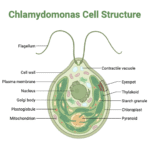Basic Microbiology 9 Views 1 Answers
Which region of the whole MHC molecule shows the highest amino acid variation? What roles do anchor residues play in peptide binding by MHC molecules?
Which region of the whole MHC molecule shows the highest amino acid variation? What roles do anchor residues play in peptide binding by MHC molecules?
Answered
Amino Acid Variation in MHC Molecules
The region of the Major Histocompatibility Complex (MHC) molecule that shows the highest amino acid variation is the peptide-binding groove. This groove is located within the MHC molecule’s α1 and α2 domains for Class I MHC molecules, and the α1 and β1 domains for Class II MHC molecules.
- Class I MHC Molecules: The α1 and α2 domains form the peptide-binding groove that accommodates peptides of 8-10 amino acids in length. This groove exhibits considerable polymorphism, which allows MHC Class I molecules to bind and present a diverse array of peptides.
- Class II MHC Molecules: The α1 and β1 domains form the peptide-binding groove that accommodates peptides of 13-25 amino acids in length. This groove also shows significant variation to enable the binding of a broad range of peptide antigens.
The variability in these regions is crucial for the immune system’s ability to recognize a wide variety of antigens.
Roles of Anchor Residues in Peptide Binding
Anchor residues are specific amino acids within a peptide that interact with the MHC molecule to ensure stable and specific binding. They play several important roles:
- Stability of Binding: Anchor residues bind to specific pockets within the peptide-binding groove of the MHC molecule. These interactions help stabilize the peptide-MHC complex, ensuring that the peptide remains bound long enough to be presented to T cells.
- Specificity: The interaction between anchor residues and the MHC peptide-binding groove helps determine the specificity of peptide binding. Different MHC molecules have different binding pockets, which means that they will preferentially bind peptides with specific amino acid residues at certain positions.
- Peptide Length and Conformation: Anchor residues help define the length and conformation of the peptide that can be bound. In Class I MHC molecules, anchor residues are typically found at the N- and C-termini of the peptide and are crucial for binding peptides of 8-10 amino acids in length. In Class II MHC molecules, anchor residues are more distributed along the peptide and accommodate longer peptides.
- Diversity of Antigen Presentation: The variability in the peptide-binding groove and the specificity of anchor residue interactions contribute to the diversity of peptides that can be presented by different MHC molecules. This diversity is essential for the immune system to recognize a wide range of antigens.
Did this page help you?




